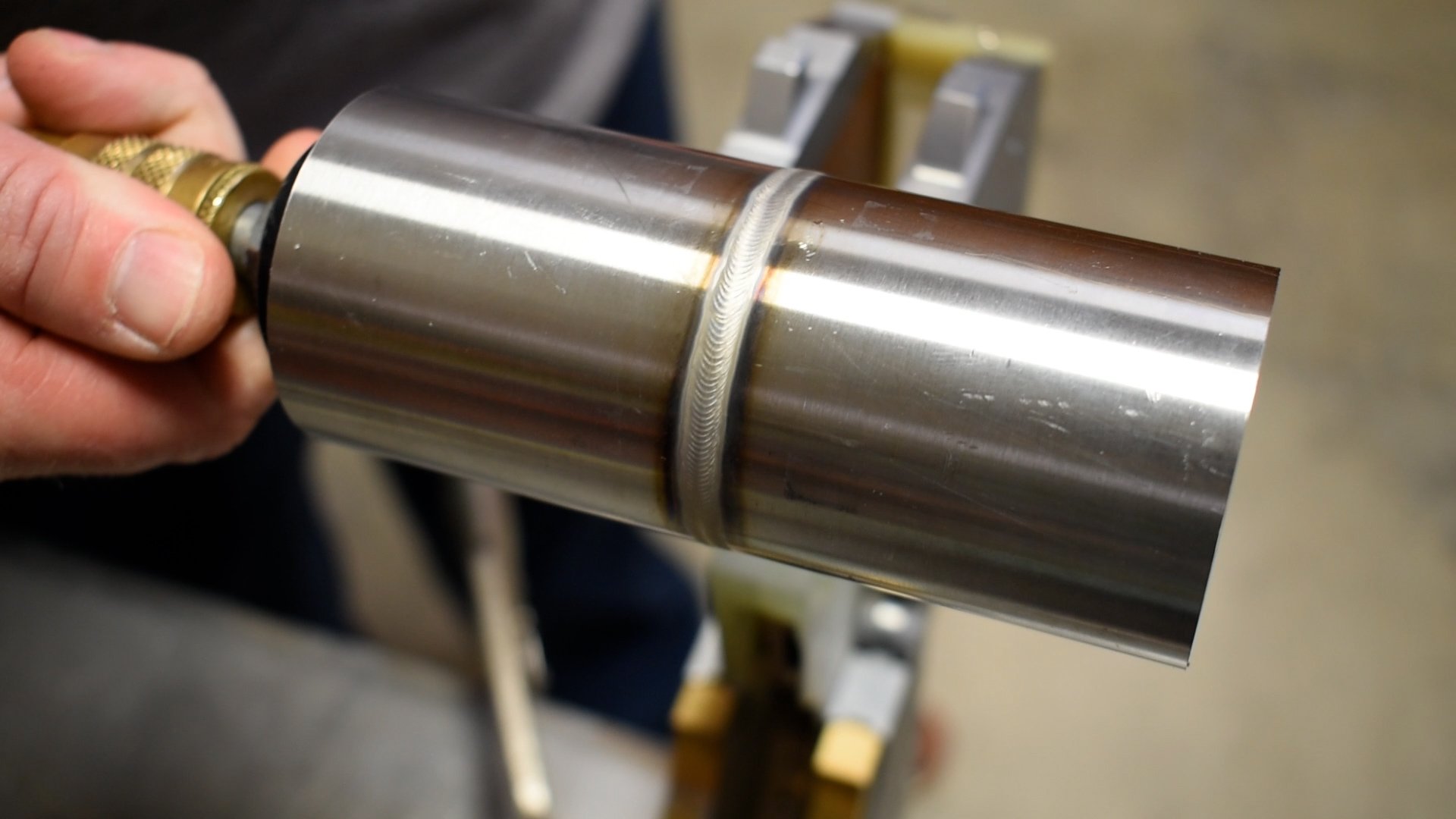Preventing Weld Undercut Demystified: Techniques for Success
Preventing Weld Undercut Demystified: Techniques for Success
Blog Article
Comprehending the Causes and Solutions for Undercut Welding in Metal Manufacture Processes
In the world of steel fabrication procedures, the event of undercut welding postures a substantial obstacle that demands a detailed understanding of its causes and practical services. The detailed interaction of different aspects during welding operations can lead to this unfavorable sensation, influencing the structural integrity and overall high quality of the bonded joints - Preventing weld undercut. By dissecting the root creates of undercut welding and exploring reliable therapeutic procedures, makers can boost the standard of their handiwork and make sure the production of remarkable steel parts
Usual Causes of Undercut Welding
Often overlooked in steel construction, undercut welding happens due to various aspects that require meticulous interest and experience to be effectively alleviated. In addition, improper welding techniques, such as using the incorrect welding angle or take a trip speed, can additionally add to undercut formation. The choice of welding parameters, such as voltage, present, and cord feed rate, plays a substantial duty in the event of undercut welding.
Effect of Incorrect Welding Parameters
Imprecise welding specifications can significantly endanger the integrity and high quality of welded joints in steel fabrication procedures. The impact of incorrect welding specifications materializes in different means, resulting in architectural weak points and defects in the welded components. One important facet influenced by inappropriate welding criteria is the infiltration depth of the weld. Insufficient heat input because of low welding currents or excessively high travel rates can lead to poor blend between the base steels, resulting in insufficient joint penetration and weakened bonds. Conversely, excessive warm input brought on by high welding currents or slow-moving travel speeds can bring about excessive and burn-through reinforcement, developing a brittle and unstable weld framework. Furthermore, inaccurate parameters such as incorrect voltage settings or wrong electrode angles can add to unpredictable weld bead accounts, lack of fusion, and boosted opportunities of flaws like undercutting. Thorough attention to welding criteria is paramount to guarantee the manufacturing of top quality welds with the wanted mechanical residential or commercial properties and architectural honesty.
Result of Improper Torch Angle
Improper lantern angle in welding operations can significantly influence the top quality and integrity of the final weld joints in metal fabrication processes. The lantern angle plays a critical role in establishing the warm input and circulation throughout welding. When the lantern angle is inaccurate, problems such as damaging can arise. Damaging is a common welding defect where a groove creates along the weld toe, weakening the joint and jeopardizing its architectural honesty.
A lantern angle that is also high can result in not enough infiltration, incomplete fusion, and boosted spatter. On the other hand, a torch angle that is as well shallow can visit this site result in too much infiltration, burn-through, and distortion of the base product. Preventing weld undercut. Correct lantern angle is crucial for guaranteeing regular weld quality, toughness, and appearance
To stop undercutting and various other issues caused by inappropriate lantern angles, welders must be trained to preserve the right torch angle throughout the welding process. Routine monitoring and adjustment of torch angles throughout welding can help achieve audio welds with marginal problems.
Function of Inadequate Welding Techniques
One more facet of poor welding techniques is inappropriate weld preparation. Poor cleansing of the base steels, incorrect joint design, or insufficient edge preparation can all add to undercut welding. Moreover, inadequate securing gas insurance coverage or using the incorrect sort of gas can result in insufficient combination and the formation of undercut problems.
To address the duty of insufficient welding techniques in steel construction processes, it is necessary to provide thorough training for welders. Correct education on welding criteria, joint prep work, and protecting gas selection can assist prevent undercut welding and make sure premium welds in metal fabrication tasks.
Efficient Solutions for Undercut Welding
Addressing undercut welding in steel fabrication needs executing effective solutions to enhance weld quality and architectural honesty. One of the primary services to deal with undercut is to readjust welding criteria such as voltage, current, and travel rate to guarantee proper warm input and fusion. By fine-tuning these settings, welders can avoid extreme melting of the base metal and filler product, decreasing the probability of undercut development.
In addition, correct joint prep work is critical in stopping undercut. Making certain tidy base steel surfaces totally free of contaminants and making use of the suitable bevel angle can help promote better weld infiltration and decrease the danger of undercut - Preventing weld undercut. Employing suitable welding methods, such as weaving or oscillating the torch, can additionally help in dispersing heat equally and filling the weld joint effectively, reducing the possibility Web Site of undercut problems
Furthermore, picking the proper welding consumables, including electrodes and filler metals, is vital in mitigating undercut. Using products with appropriate chemical make-ups and mechanical residential properties can contribute to achieving sound welds with very little undercut. Regular evaluation and quality assurance procedures must additionally be executed to detect and attend to undercut concerns without delay, making certain the total honesty of fabricated metal parts.

Conclusion
In verdict, recognizing the reasons and services for undercut welding in steel fabrication procedures is critical for achieving top quality welds. By addressing common causes such as inaccurate welding specifications, improper lantern angle, and poor welding strategies, welders can avoid undercutting and make certain solid, long lasting welds. It is vital to take note of these aspects and carry out effective solutions to improve the overall welding process and last item high quality.

Report this page